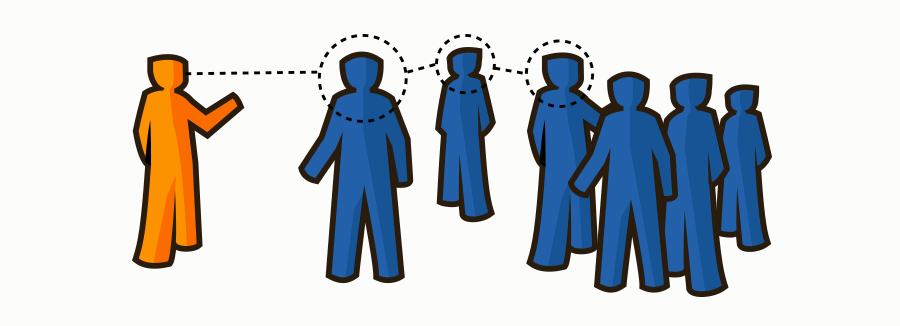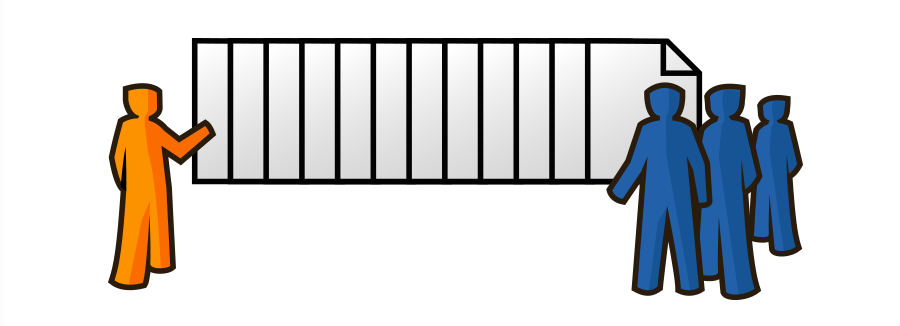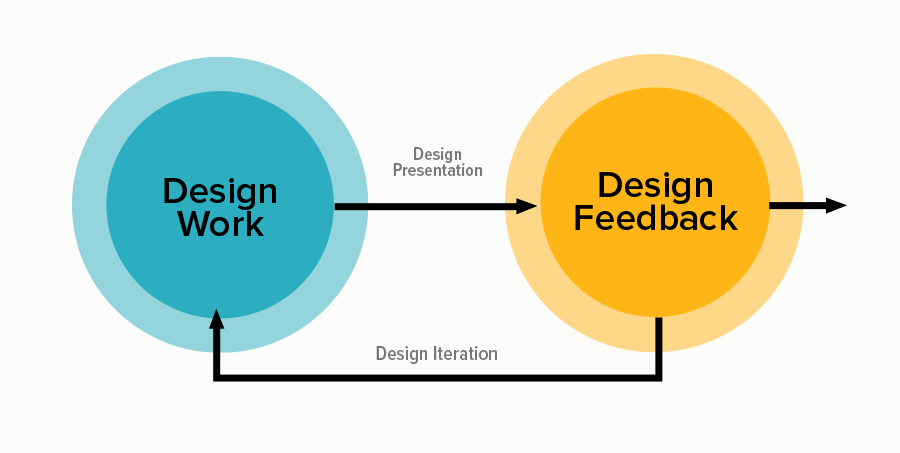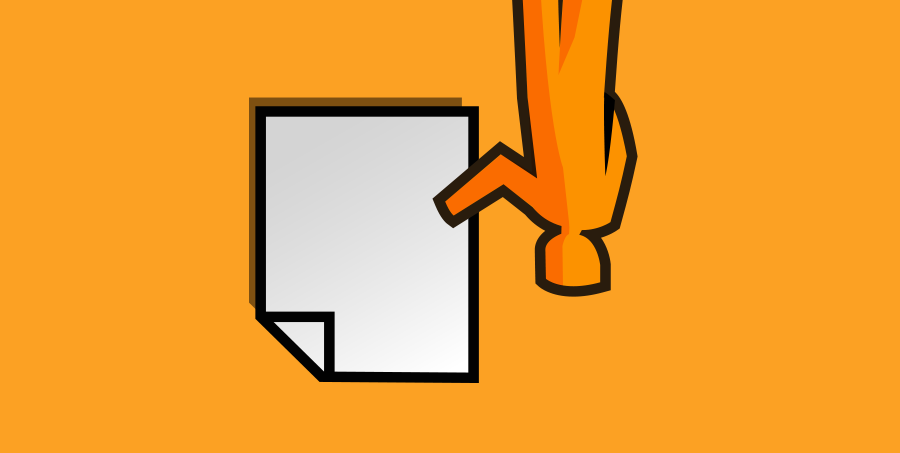Last week we wrote about the design leadership gap and the need support emerging designers with career paths. It's an assessment of where we are as an industry that highlights gaps we'll need to close to fill our design leadership roles. And while the blog post creates an impression that leading design requires a design management title in an organization, this couldn't be further from the truth.
Designers don't need a defined role to lead. In fact, designers should look at this opportunity to lead through influence. Progressive design has taught us that design leadership doesn't require a title or even heavy management experience, only a strong desire to learn people skills and shape outcomes in an organization with design. After leading design for a decade and a half, I still believe that being a designer doesn't automatically entitle you to the collective benefits of any industry. You have to sell yourself and your talents every time you walk into a room.
If you have the skills to drive ideas, those skills allow you to set the rules and process; if being the person who pushes ideas forward just isn't your thing, you might find yourself becoming the disgruntled designer. So whether you aspire to a management title, or just want to get your ideas driving your company forward, learning design leadership skills are important for all designers.
Developing Design Leadership Skills
Eight years ago, I sat down in the maternity ward waiting for my second child to be born. My wife still reminds me today that I was also giving a brown bag lunch talk to Yahoo! employees on the topic of design strategy. Luke Wroblewski was kind enough to ask me to speak weeks earlier, and I agreed with the caveat that I might make adjustments given that my wife could go into labor. So on the big day, it went from a talk to a round table via a conference line, and what came out of it was a three-part series that he published on his blog and a healthy baby boy.
The post I wrote for Luke is still incredibly relevant today. It highlights areas an aspiring design leader should learn. The post was focused on becoming a design strategist, but quite frankly, most of these skills fall into a leadership skills bucket. Design leadership is about managing influence through inspiration, action and getting stuff done. This post has been updated and improved with a list of skills I've learned since 1998:
Read the room to influence people

What's the most important skill of business decision making? Knowing what drives people to make decisions. Getting groups of people excited about an idea requires you to understand what motivates them. You might have the best ideas in the world, but if you fail to understand the dynamics of the room, you may never get past your first idea.
In my first consulting gig, I was invited to present a proposal at a board meeting, unaware that this public company's entire executive team would be in attendance. There were two billionaires sitting at the table. Really. I was wholeheartedly unprepared to sell a single idea to this crowd. I tried getting the group to brainstorm, using some techniques that had been successful for me in past situations. But in less than five minutes I was told, "I think we're done here."
Ouch. It's a lesson that still rings in my head today and creates an anxiety of not being prepared. The lesson taught me that being a designer puts you in no special category to have better ideas. You have to be prepared for every meeting and interaction to justify and sell your vision. You need to know who will be in the room and know the ideas that are trapped in those attending. The experience was humbling and shaped much of my understanding of how to build a service company.
Reading people is a skill that can be learned, and doing it well comes as the result of years of practice. It takes time, as intuition is built on experience. Emotional intelligence is also a big component of design leadership. Every meeting, every conversation is an opportunity to hone your skills. Learn to to sit and observe people in open areas — it's a great way become present and watch how people react to situations. Read body language and learn from people who do this effectively. The Definitive Book of Body Languageis a great read if you're looking for an introduction into learning to observe people.
Don't over research the design problem

By its very nature, a designer's job requires using both left and right brain functions. In fact, one of my most recent blog posts highlights that you will be required to use your entire brain. Sometimes over-thinking a solution makes it hard to get people excited about the emotional content of our work. You do need to present research that helps your point, but don't make the mistake of devaluing your gut instincts or hunches.
Creativity is just connecting things. When you ask creative people how they did something, they feel a little guilty because they didn't really do it, they just saw something. It seemed obvious to them after a while. That's because they were able to connect experiences they've had and synthesize new things. And the reason they were able to do that was that they've had more experiences or they have thought more about their experiences than other people.
Designers have an innate ability to sense and feel out a problem based on experience. This is a characteristic that many people wish they had. Sometimes, you're just going to know something is 'right' and you won't have the luxury of time to do the research to back you up. Train other non-designers in your company or your clients to be willing to take a chance on your hunches.
Build in the metrics to support your work
No matter how right-brained and creative we think we might be, in the business world, clients want quantifiable results. Building benchmarks and metrics into your projects will ensure that you get the chance to really show them what you've got, by giving them enough numbers during the process that they feel comfortable.
Remember, lots of people think that Excel spreadsheets and pie charts are the best way to justify budgets and map out next phases. Don't send your team or clients into metrics withdrawal — with a little work on your part, you can devise a numerical report card that helps the analytical team members to feel more in control of and informed about the whole process, meaning that there's a better chance they'll sit back and let you work your magic uninterrupted. This is an important concept of progressive design.
Design leads must find basic measurements that will inspire their team to stretch the goals and justify their decisions. At a tactical level, we've explored Design Quips to justify our work, and also figured out ways to align the product work with business and user goals through a design strategy framework.This is a difficult process and often requires continual conversations with stakeholders.
Design is a real-time performance
The best business people are ones who can adjust their thinking quickly. Pressed with tough decisions, they must be able to rally a team around business and financial goals and plans. If a big deal is on the line, tough decisions have to be made quickly ' and once decided, they're done. You can't hit CTRL-Z to 'undo' a business deal.
Design should be no different. As a designer, you must be able to use your unique skills of visual thinking to rally people in a room. While this may come more naturally to some over others, it is a skill that will improve with practice. You need to be comfortable presenting whiteboard sketches in front of a group — no matter how much you wish you could call a timeout to whip up something on your laptop, you'll lose momentum. If you can't think and draw at the same time you're going to limit your ability to listen to other ideas in the room — so practice at your own internal meetings until you're ready for your public debut.
It's been said that Steve jobs would put an hour of practice for every minute of his presentations. Using progressive design would make that prohibitive (and unnecessary in most cases), but the more you utilize these techniques, the easier it becomes to influence a room. We look for lower fidelity tools and encourage everyone at ZURB to use sketching to present their ideas because it brings people together. With the right practice, interface sketching can be learned to bridge the communication gap between different groups in an organization.
Balance prep with with design implementation
Everyone likes to see that you've done your homework — lists, research, interviews, overviews and competitive reviews. It's an important part of the process of designing 'stuff'. It validates that there is thinking involved.
Sometimes, however, it makes sense to just jump into a problem based on your hunch and your experience, and then go back and think through all the homework parts. There are times when simply taking action, creating movement and momentum are preferable to investing loads of time up front —in other words, sometimes any action, even a potentially 'wrong' one, is better than no action at all. It's the blue-collar part of design that the rest of the business world lacks'that good ole roll up your sleeves and just get it done. John Quincy Adams summed this up nicely, "If your actions inspire others to dream more, learn more, do more and become more, you are a leader."
As designers we spend so much time trying to drive actions with users that we don't think about how to drive decisions within our own teams. I've learned through my years of leading that it's often better to teach designers how to ship than what to ship.
Justify design decisions with the right kind (and amount) of research

Contrary to point my point earlier, there comes a time when the emotional side of design needs a good helping of "reality." Designers need to drive research —otherwise we're stuck with the research of others (and some of those 'findings' may include an ever-unhelpful 50-page document of how many people liked the color blue.) Large focus groups and studies are nice, but they rarely help you create a marketable product. Why? Two reasons: One, they're really expensive —that money could be better spent in the actual production. Two, they're prohibitively time-consuming: By the time all the data is gathered, your competitors are already building the product.
Designers have the unique ability to notice trends'and the 'way things are'. Heuristic evaluation and small tests are often all that's needed to keep a product team focused on the 'wow'.
Years ago we had a client that called up frantically saying that they had lost 90% of their monthly revenue after switching to a new photo printing platform. A lot of money was invested in this new branded solution and the future earnings at stake was huge. We could have spent weeks trying to diagnose the problem by thoroughly researching the problem, but within a few hours we were able to determine from using a bottom up strategy that the main issue was an incorrect use of form elements. That's powerful.
Design is no longer the domain of designers
Everyone has their own favorite color or font. They can move elements on a whiteboard, write content to describe actions, screenshot a competitor's website or talk about their great experience. Use this to your benefit and coach people through your decision making. Everyone wants to be an armchair design 'quarterback' so let them play fantasy football by helping them make better decisions.
Progressive design is a great way to involve team members in design decisions to help you gain more control of the final product. Design leaders shouldn't shy away from this exposure as it's a way to build trust with a team. Utilize techniques that give you more influence over the design process and meetings, and feel good about shaping outcomes based on the input from other disciplines. Many stakeholders have progressed far enough in their understanding of design brainstorming, but lack the depth and knowledge to drive design work through the finish line. Designers can drive this process and shouldn't have to know everything!

The design feedback loop is great way to create consistent, recurring patterns that build trust with non-designers. Being open to ideas that impact your original vision shows that you're willing to hear others' input. Design is a team sport —be the best coach you can be, remembering that you're ultimately responsible for the end product.
Utilize visuals for a bottom-up strategy

Designers are in a unique position to control a company's vision through visuals. They're probably the only people who are consistently expected to show up with colorful items at staff meetings. Take advantage of your visual aids — use a 'hands on approach' to get people rallying behind ideas. Designers tend to be 'doers' rather than 'dwellers', so use your vision to change the course of business planning by implementing ideas. Waiting on management to decide on a direction can have a negative impact on momentum of a project. Take some risks.
Now, if that doesn't sound good, you could always try to justify your ideas the same way the folks in accounting do — with reams of spreadsheets. But when is the last time you saw people get excited about a spreadsheet? For every 10 people, most organizations already have nine workers doing paper jobs. Break up status quo.
Design requires a healthy understanding of top-down and bottom-up strategies, and this isn't easily learned without first being a practitioner, especially one that creates imagery. In interface design, a picture really is worth a thousands words, or more importantly, a picture helps to influence how people feel about a design direction. A recent study showed that when asked,"What would you change about this image?" many people did not respond to this question, and if they did, they almost always said that they would change nothing. Wow!
Know that you will fail, and how to do it
Good design stimulates emotion, inspires participation and gets people engaged. But not every design that you create will succeed — sometimes a design will do none of the above and will fall absolutely, unequivocally flat on its face. And that's OK! Build failure into your design process — you shouldn't even try if you want to completely avoid failing, and nothing tried is always nothing gained. A great designer will push boundaries and learn from mistakes. Some of the stuff that you do will stink. Learn how to use that to your advantage to make your projects more successful.
As an industry, designers have sabotaged themselves in organizations by overvaluing the desire to perfect the work. If we compared success to other professions, we'd find that people celebrate being wrong two-thirds of the time. Babe Ruth, greatly considered one of the best hitters of all time, had a batting average of .342. Designers need to celebrate the path to success by making note of all the failures.
At a career level, politicians like Lincoln can teach us that failure is a necessary part of the job. Failure should be accepted in the work, but we're often afraid of the wrong answer and our own harshest critics. Designers need to practice asking the right questions and work through problems in the open so that we get better accepting failure.
Be a salesman with a design soul
Things happen for a reason. Oracle didn't become a powerhouse because they had "great design" —design just didn't get in the way. If you want to influence people in the room you need sales skills. Half of getting your idea implemented has nothing to do with a computer, wireframes, research or sketches. It's because people like you. And if they don't like you, then they've at least got to respect you've got to have some proven game.
People want to support other successful people and ideas. It's contagious. And while I'm not suggesting you throw yourself at business associates looking for a best friend, I am suggesting that you be confident in yourself and personality. There's no need to be fake. Just put genuine effort into solving problems for your customers, whether they're your internal customers or the ones who buy your products. Having the right presentation is a great place to start.
Design leadership requires fighting for ideas
Fight when you have to. Know when you shouldn't settle for a watered-down compromise. My final suggestion for the aspiring design leader is less about design or leadership — it's about winning. You've got to want to influence people, make a difference and convince people to believe in you. You've got to throw yourself into the ring.
Business is brutal. Capitalism drives us to be more successful — and that's a good thing. It pushes us to make decisions. Don't let a conference room intimidate your business sensibilities. Design requires putting on boxing gloves. The beauty of design is that you can always use the emotional side to calm and inspire after a difficult interaction with your "financial" nemesis.
And that's it. Being a design leader isn't the easiest role. When you're sitting in your third meeting of the day (you know, the one that begins at 4PM and promises to go right through dinner?) trying to 'enlighten' the client as to why they shouldn't use their favorite 'stacked rocks' image on the home page — those days of sitting in the cubicle, pushing pixels while your iTunes is blaring in your ears — may seem real attractive. But take heart in this — the world is a more attractive place because you marry business and design on a daily basis. And for that, we thank you.
(thanks to Thomas Vander Wal and Andy Van Solkema for their insights on the post)

Bryan Zmijewski
Leading the charge at ZURB since 1998
Our fearless leader has been driving progressive design at ZURB since 1998. That makes him quite the instigator around the offices, consistently challenging both the team and our customers to strive to always do better and better.
Learn more →
Follow him at @bryanzmijewski
